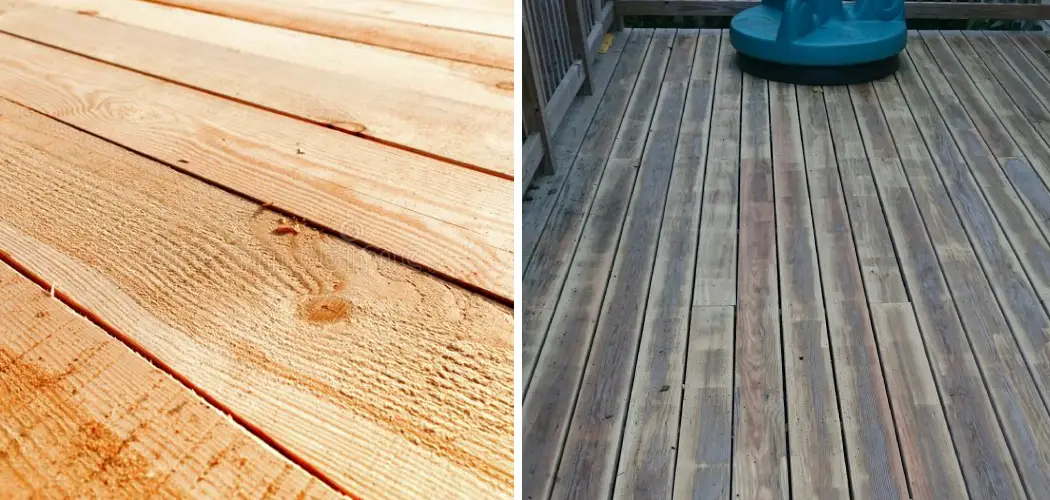If you’ve noticed that your deck boards are cupping, it’s important to address the issue promptly to maintain the structural integrity and aesthetic appeal of your outdoor space. Cupping occurs when deck boards warp and curl along their edges, creating a concave shape that can trap water and debris, leading to further damage.
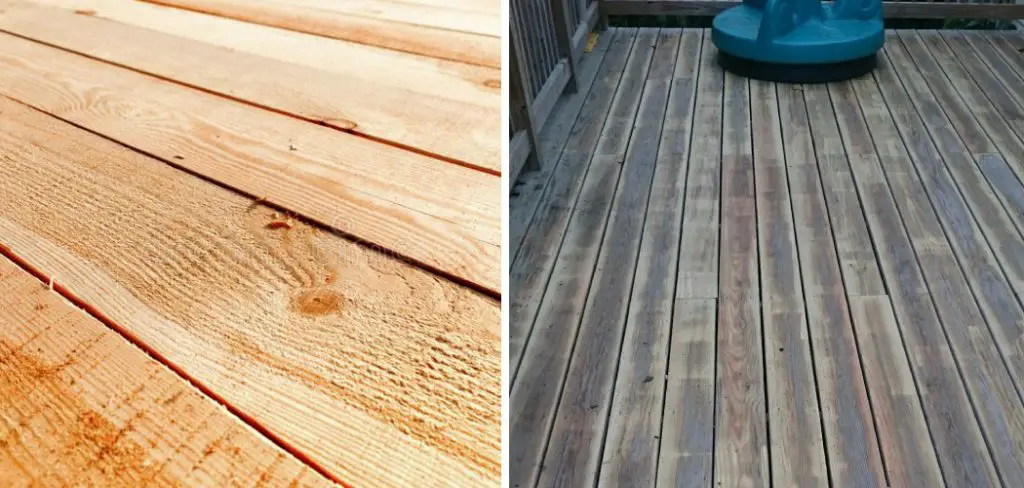
Fortunately, there are several steps you can take to fix cupped deck boards and restore them to their original flat position. This article will guide you through the process of how to fix cupped deck boards, starting with identifying the causes of cupping and providing practical solutions to rectify the problem.
From assessing the overall condition of your deck to implementing proper maintenance techniques and utilizing effective repair methods, we’ll cover everything you need to know to bring your deck back to its best shape. By following these steps, you can ensure a safer and more enjoyable outdoor space for years to come.
Why Are My Deck Boards Cupping?
Cupped deck boards can be caused by a few different things. Moisture is the most common culprit. If there’s too much moisture in the wood, it can cause the board to swell and bend upward into a “cupped” shape.
This is especially true if your deck was built using pressure-treated lumber. Pressure-treated lumber has been treated with chemicals that can cause the wood to warp if it absorbs too much moisture.
Temperature changes can also be a factor in cupped deck boards. If one side of your board is exposed to more direct sunlight, this can cause the board to expand more than the other side, resulting in cupping. In addition, if your deck is built on soil that shifts or settles over time it can cause the boards to warp and cup.
Fortunately, cupped deck boards are usually an easy fix. By following a few simple steps, you’ll have your deck looking as good as new in no time!
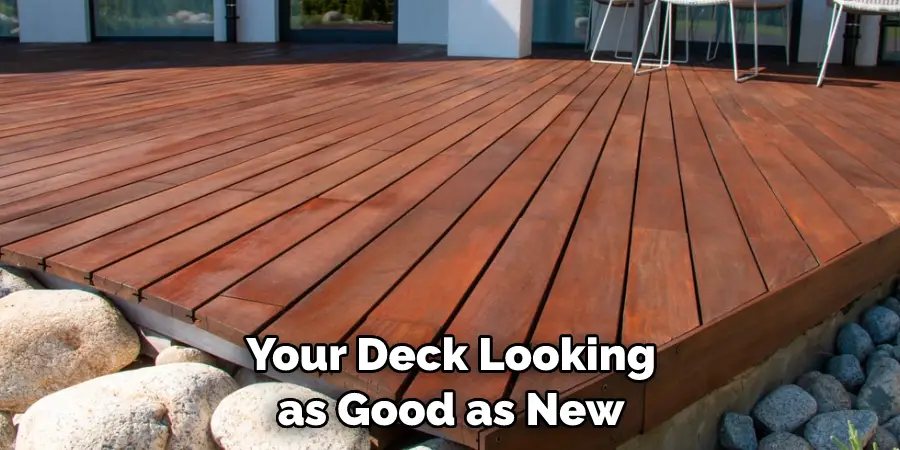
What Causes Cupping in Wood?
Cupping in wood happens when the board absorbs moisture unevenly. This can be due to a variety of factors, including a lack of ventilation underneath the deck boards and exposure to heat or sun on one side of the board. The combination of these things can cause one edge of a board to swell more than the other, causing it to cup.
Left untreated, cupping can cause major damage to your deck and can lead to costly repairs. To prevent this from happening, it’s important to understand why wood warps and how you can fix cupped boards before they become an issue.
To fix cupped deck boards, the most important step is to determine the cause and address it first.
If the deck is exposed to a lot of sun on one side, then you can try shading the boards to create more even moisture absorption. If there isn’t enough ventilation underneath your deck, adding in some vents or fans can help.
Once you have addressed the underlying issue that caused the cupping, you can begin to repair the boards. The best way to do this is by sanding down the surface and taking off any high spots with a belt sander or orbital sander. You’ll want to be sure to sand in the same direction as the board grain and use light pressure so that you don’t damage the wood.
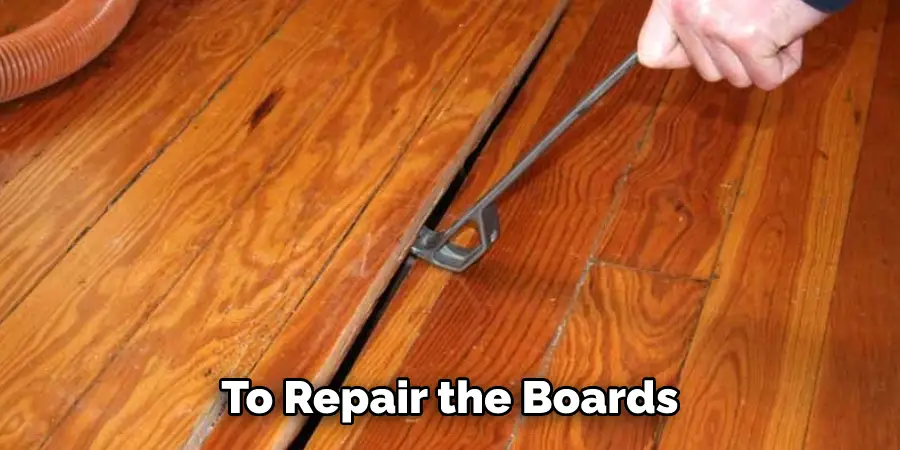
10 Methods How to Fix Cupped Deck Boards
1. Inspect the Deck Boards
The first step in fixing cupped deck boards is to inspect the boards for damage. Look for cracks, splits, or other signs of wear and tear. If any of the boards are damaged, they will need to be replaced before proceeding. While inspecting the deck boards, also check to make sure they are securely fastened to the joists. If any of the fasteners are missing or loose, this could be contributing to the cupping. To repair this, use new screws or nails to affix the boards more securely.
2. Check the Moisture Content of the Wood
One of the main causes of cupping is the uneven moisture content in the wood. To check the moisture content, use a moisture meter to test the boards. The ideal moisture content for deck boards is between 15% and 20%. If the boards are too dry or too wet, they will be more likely to cup. If the boards are too dry, wet them down with a garden hose and let them sit for a few days. If they are too wet, allow more time for them to dry before installing.
3. Adjust the Decking Materials
If the deck boards are made of pressure-treated lumber, they may need to be replaced with a different type of lumber. Pressure-treated lumber is treated with chemicals that can make it more resistant to rot and insect damage, but these chemicals can also make the wood more susceptible to cupping. If possible, use a different type of lumber, such as cedar or redwood, for your deck boards.
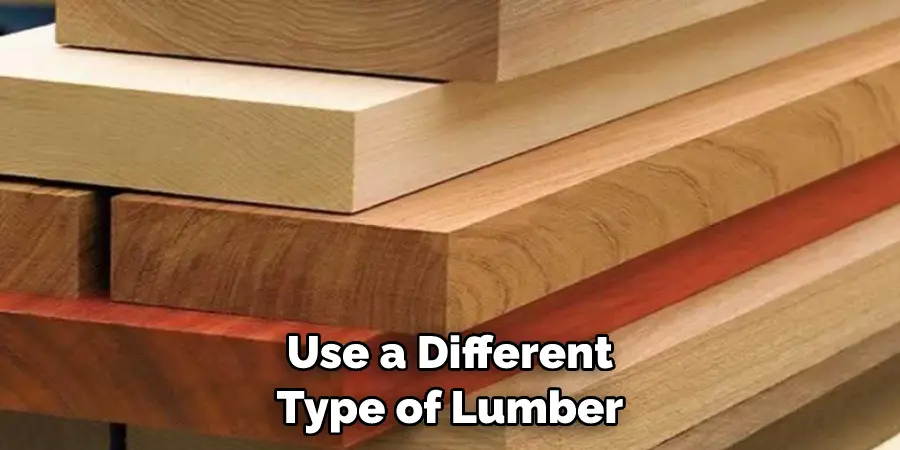
4. Use Shims to Level the Boards
If the deck boards are not level, they will be more likely to cup. Use shims to level out any low spots in the boards. Make sure to use shims that are made of rot-resistant material such as plastic or metal so they do not degrade over time. Place them between the joist and the board and use a hammer to tap them in until they are flush with the surface. Make sure that all of the boards are level before moving on to the next step.
5. Pre-drill Holes for Screws
When attaching deck boards, it is important to pre-drill holes for screws. This will prevent the wood from splitting when you drive in the screws. It is also a good idea to countersink the screws so they are flush with the surface of the wood.
This will help prevent them from working their way out over time. When pre-drilling, be sure to use a drill bit that is slightly smaller than the screw. This will ensure a tight fit and help keep the screw from loosening as time goes on.
6. Use Stainless Steel Screws
When attaching deck boards, use stainless steel screws instead of nails or other types of fasteners. Stainless steel screws will not rust like other types of fasteners, and they will provide a stronger hold than nails or other types of fasteners.
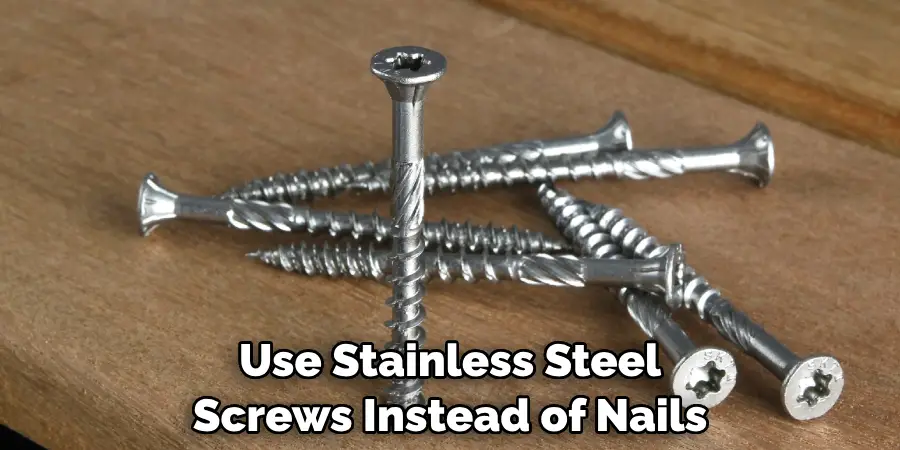
This will help keep the board from cupping as it will be less likely to move or come loose due to the extra strength of the stainless steel screws. Although stainless steel screws cost a little more than regular nails or fasteners, it is well worth the investment to ensure that your deck boards remain cupped-free.
7. Space Deck Boards Evenly
When attaching deck boards, make sure to space them evenly apart. This will allow them to expand and contract as needed without causing cupping. The spacing between deck boards should be at least 1/4 inch (6 mm).
Make sure to use a spacer when installing the boards using nails or screws. This will help ensure that the boards are spaced properly and securely fastened. Additionally, it is important to leave a gap between the end of the board and any wall or post.
8. Use Gaps Between Deck Boards
When installing decking, leave gaps between each board so water can drain properly and air can circulate around each board. These gaps should be at least 1/4 inch (6 mm). If you live in an area with high humidity, you may need to leave larger gaps between each board. For example, in tropical climates, you may need to leave up to 1/2 inch (13 mm).
9. Attach Deck Boards With Clips
You can also attach decking using clips instead of screws or nails. These clips allow some movement between each board, which helps prevent cupping. This is a great option for those who want to avoid using nails and screws. There are several varieties of clips available, so be sure to do your research and pick the right clips for your deck.
10. Regularly Maintenance Your Deck
Finally, it is important to regularly maintain your deck by cleaning it and applying a sealant or stain every few years. This will help protect your deck from weather damage and extend its lifespan. It is also important to inspect your deck on a regular basis for any signs of damage or wear and tear. If you find any cupping, it is important to address the issue quickly before it becomes more severe and harder to fix.
Conclusion
When the boards of your deck are cupped you should remember to stay focused and not let your emotions run away with your thoughts. Getting frustrated and leaping to the worst conclusions can lead to more problems, so try to stay levelheaded and take each step logical. Remember that patience is key when fixing cupped deck boards, as it’s vital that you don’t rush any parts of this tricky process.
While mistakes can happen, having an effective repair plan in place will ensure that your deck is restored swiftly and safely. So if you’re looking for guidance on how to fix cupped deck boards then keep these tips in mind – they’ll make sure everyone enjoys a strong, beautiful deck without having to break out the crowbar!
You Can Check It Out Fix Curled Up Deck Boards

